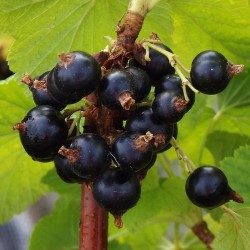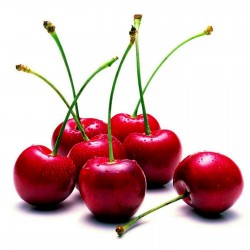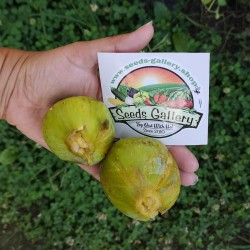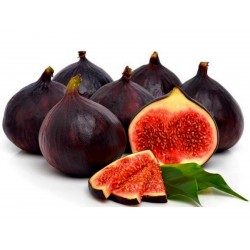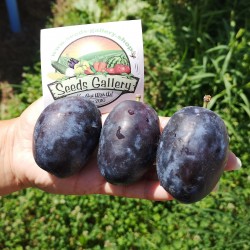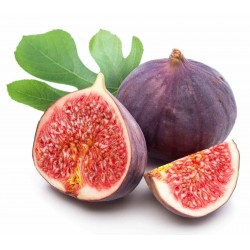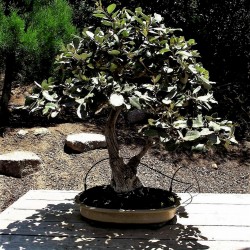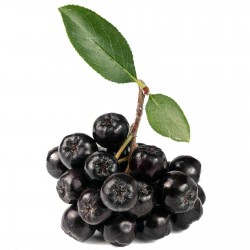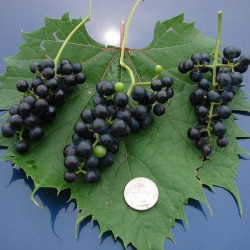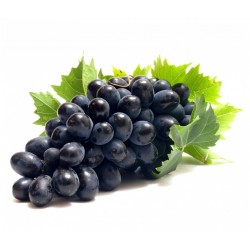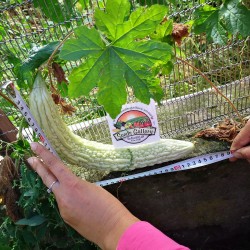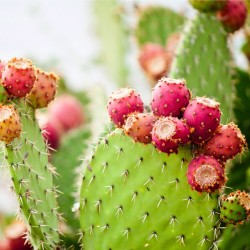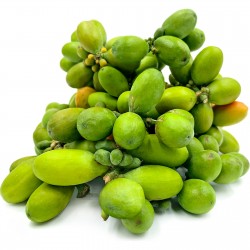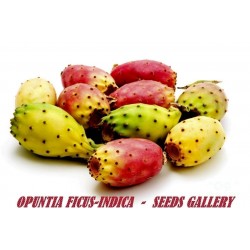
Plant resistant to cold and frost

Coming Soon
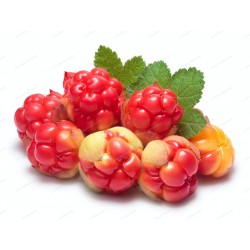
Cloudberry Seeds (Rubus...
Price
€3.85
(SKU: V 100 RC)
Seeds Gallery EU,
5/
5
<meta http-equiv="Content-Type" content="text/html; charset=UTF-8" />
<h2><strong>Cloudberry Seeds (Rubus chamaemorus)</strong></h2>
<h2><span style="color: #f70606;"><strong>Price for Package of 5 seeds.</strong></span></h2>
<p><i><b>Rubus chamaemorus</b></i><span> </span>is a<span> </span>species<span> </span>of<span> </span>flowering plant<span> </span>in the rose<span> </span>family<span> </span>Rosaceae, native to cool<span> </span>temperate<span> </span>regions,<span> </span>alpine<span> </span>and<span> </span>arctic tundra<span> </span>and<span> </span>boreal forest.<span> </span>This<span> </span>herbaceous<span> </span>perennial<span> </span>produces amber-colored edible fruit similar to the<span> </span>blackberry. English common names include<span> </span><b>cloudberry</b>,<span> </span><b>nordic berry</b>,<span> </span><b>bakeapple</b><span> </span>(in<span> </span>Newfoundland and Labrador),<span> </span><b>knotberry</b><span> </span>and<span> </span><b>knoutberry</b><span> </span>(in England),<span> </span><b>aqpik</b><span> </span>or<span> </span><b>low-bush salmonberry</b><span> </span>(in<span> </span>Alaska<span> </span>– not to be confused with salmonberry,<span> </span><i>Rubus spectabilis</i>),<sup id="cite_ref-3" class="reference">[3]</sup><span> </span>and<span> </span><b>averin</b><span> </span>or<span> </span><b>evron</b><span> </span>(in<span> </span>Scotland).</p>
<h2><span class="mw-headline" id="Description">Description</span></h2>
<div class="thumb tright">
<div class="thumbinner"><img alt="Cloudberry Seeds (Rubus chamaemorus)" src="https://upload.wikimedia.org/wikipedia/commons/thumb/1/1c/Rubus_chamaemorus_LC0151.jpg/230px-Rubus_chamaemorus_LC0151.jpg" decoding="async" width="230" height="307" class="thumbimage" srcset="//upload.wikimedia.org/wikipedia/commons/thumb/1/1c/Rubus_chamaemorus_LC0151.jpg/345px-Rubus_chamaemorus_LC0151.jpg 1.5x, //upload.wikimedia.org/wikipedia/commons/thumb/1/1c/Rubus_chamaemorus_LC0151.jpg/460px-Rubus_chamaemorus_LC0151.jpg 2x" data-file-width="1600" data-file-height="2133" title="Cloudberry Seeds (Rubus chamaemorus)" />
<div class="thumbcaption">
<div class="magnify"></div>
Male flower</div>
</div>
</div>
<p>Unlike most<span> </span><i>Rubus</i><span> </span>species, the cloudberry is<span> </span>dioecious, and fruit production by a female plant requires pollination from a male plant.<sup id="cite_ref-thiem_1-1" class="reference">[1]</sup></p>
<p>The cloudberry grows to 10–25 cm (4–10 in) high.<sup id="cite_ref-thiem_1-2" class="reference">[1]</sup><span> </span>The<span> </span>leaves<span> </span>alternate between having 5 and 7 soft, handlike lobes on straight, branchless stalks. After pollination, the white (sometimes reddish-tipped)<span> </span>flowers<span> </span>form raspberry-sized<span> </span>aggregate fruits<span> </span>which are more plentiful in wooded rather than sun-exposed habitats.<sup id="cite_ref-thiem_1-3" class="reference">[1]</sup><span> </span>Consisting of between 5 and 25<span> </span>drupelets, each fruit is initially pale red, ripening into an amber color in early autumn.</p>
<h2><span class="mw-headline" id="Distribution_and_ecology">Distribution and ecology</span></h2>
<p>In North America, cloudberries grow wild across Greenland, most of northern Canada, Alaska, northern Minnesota, New Hampshire, Maine, and New York.<sup id="cite_ref-thiem_1-8" class="reference">[1]</sup><sup id="cite_ref-5" class="reference">[5]</sup>Cloudberries are a circumpolar boreal plant, occurring naturally throughout the<span> </span>Northern Hemisphere<span> </span>from 78°N, south to about 55°N, and are scattered south to 44°N mainly in mountainous areas and<span> </span>moorlands.<sup id="cite_ref-thiem_1-4" class="reference">[1]</sup><span> </span>In Europe, they grow in the<span> </span>Nordic countries,<span> </span>Baltic states<span> </span>and particularly in<span> </span>Poland.<sup id="cite_ref-thiem_1-5" class="reference">[1]</sup><span> </span>They occur across northern<span> </span>Russia<span> </span>east towards the<span> </span>Pacific Ocean<span> </span>as far south as<span> </span>Japan.<sup id="cite_ref-thiem_1-6" class="reference">[1]</sup><span> </span>Due to peatland drainage and<span> </span>peat<span> </span>exploitation, they are considered<span> </span>endangered<sup id="cite_ref-thiem_1-7" class="reference">[1]</sup><span> </span>and are under legal protection in Germany's<span> </span>Weser<span> </span>and<span> </span>Elbe<span> </span>valleys, and at isolated sites in the English<span> </span>Pennines<span> </span>and<span> </span>Scottish Highlands. A single, fragile site exists in the<span> </span>Sperrin Mountains<span> </span>of<span> </span>Northern Ireland.<sup id="cite_ref-4" class="reference">[4]</sup></p>
<p>Wide distribution occurs due to the excretion of the indigestible seeds by birds and mammals. Further distribution arises through its<span> </span>rhizomes, which are up to 10 m (33 ft) long and grow about 10–15 cm (3.9–5.9 in) below the soil surface, developing extensive and dense berry patches.<sup id="cite_ref-thiem_1-9" class="reference">[1]</sup><span> </span>Cuttings of these taken in May or August are successful in producing a genetic<span> </span>clone<span> </span>of the parent plant.<sup id="cite_ref-6" class="reference">[6]</sup><span> </span>The cloudberry grows in<span> </span>bogs,<span> </span>marshes,<span> </span>wet meadows,<span> </span>tundra<span> </span>and altitudes of 1,400 metres (4,600 ft) above sea level in Norway, requiring acidic ground (between 3.5 and 5<span> </span><i>p</i>H).<sup id="cite_ref-thiem_1-10" class="reference">[1]</sup></p>
<p>Cloudberry leaves are food for<span> </span>caterpillars<span> </span>of several<span> </span>Lepidoptera<span> </span>species. The<span> </span>moth<span> </span><i>Coleophora thulea</i><span> </span>has no other known food plants. See also<span> </span>List of Lepidoptera that feed on Rubus.</p>
<h2><span class="mw-headline" id="Cultivation">Cultivation</span></h2>
<div class="thumb tright">
<div class="thumbinner"><img alt="Cloudberry Seeds (Rubus chamaemorus)" src="https://upload.wikimedia.org/wikipedia/commons/thumb/2/27/Cloudberries.jpg/230px-Cloudberries.jpg" decoding="async" width="230" height="154" class="thumbimage" srcset="//upload.wikimedia.org/wikipedia/commons/thumb/2/27/Cloudberries.jpg/345px-Cloudberries.jpg 1.5x, //upload.wikimedia.org/wikipedia/commons/thumb/2/27/Cloudberries.jpg/460px-Cloudberries.jpg 2x" data-file-width="1448" data-file-height="972" title="Cloudberry Seeds (Rubus chamaemorus)" />
<div class="thumbcaption">
<div class="magnify"></div>
Ripe cloudberries</div>
</div>
</div>
<p>Despite great demand as a delicacy (particularly in Sweden, Norway and Finland) the cloudberry is not widely cultivated and is primarily a wild plant. Wholesale prices vary widely based on the size of the yearly harvest, but cloudberries have gone for as much as €10/kg (in 2004).<sup id="cite_ref-bloomberg-Heiskanen-&-Erkheikki_7-0" class="reference">[7]</sup></p>
<p>Since the middle of the 1990s, however, the species has formed part of a multinational research project. Beginning in 2002, selected<span> </span>cultivars<span> </span>have been available to farmers, notably 'Apolto' (male), 'Fjellgull' (female) and 'Fjordgull' (female). The cloudberry can be cultivated in Arctic areas where few other crops are possible, for example along the northern coast of<span> </span>Norway.</p>
<h2><span class="mw-headline" id="Uses">Uses</span></h2>
<div class="thumb tright">
<div class="thumbinner"><img alt="Cloudberry Seeds (Rubus chamaemorus)" src="https://upload.wikimedia.org/wikipedia/commons/thumb/a/af/Chamaemorus_fruit.jpg/230px-Chamaemorus_fruit.jpg" decoding="async" width="230" height="211" class="thumbimage" srcset="//upload.wikimedia.org/wikipedia/commons/thumb/a/af/Chamaemorus_fruit.jpg/345px-Chamaemorus_fruit.jpg 1.5x, //upload.wikimedia.org/wikipedia/commons/thumb/a/af/Chamaemorus_fruit.jpg/460px-Chamaemorus_fruit.jpg 2x" data-file-width="599" data-file-height="549" title="Cloudberry Seeds (Rubus chamaemorus)" />
<div class="thumbcaption">
<div class="magnify"></div>
Unripe cloudberry</div>
</div>
</div>
<div class="thumb tright">
<div class="thumbinner"><img alt="Cloudberry Seeds (Rubus chamaemorus)" src="https://upload.wikimedia.org/wikipedia/commons/thumb/0/03/Homemade_cloudberry_jam.jpg/230px-Homemade_cloudberry_jam.jpg" decoding="async" width="230" height="154" class="thumbimage" srcset="//upload.wikimedia.org/wikipedia/commons/thumb/0/03/Homemade_cloudberry_jam.jpg/345px-Homemade_cloudberry_jam.jpg 1.5x, //upload.wikimedia.org/wikipedia/commons/thumb/0/03/Homemade_cloudberry_jam.jpg/460px-Homemade_cloudberry_jam.jpg 2x" data-file-width="2618" data-file-height="1752" title="Cloudberry Seeds (Rubus chamaemorus)" />
<div class="thumbcaption">
<div class="magnify"></div>
Cloudberry jam</div>
</div>
</div>
<p>The ripe fruits are golden-yellow, soft and juicy, and are rich in<span> </span>vitamin C.<sup id="cite_ref-thiem_1-11" class="reference">[1]</sup><span> </span>When eaten fresh, cloudberries have a distinctive tart taste. When over-ripe, they have a creamy texture somewhat like yogurt and a sweetened flavor. They are often made into<span> </span>jams,<span> </span>juices, tarts, and liqueurs. In Finland, the berries are eaten with heated<span> </span><i>leipäjuusto</i><span> </span>(a local cheese; the name translates to "bread-cheese"), as well as<span> </span>cream<span> </span>and<span> </span>sugar. In Sweden, cloudberries (<i>hjortron</i>) and cloudberry jam are used as a topping for ice cream, pancakes, and waffles. In Norway, they are often mixed with<span> </span>whipped cream<span> </span>and sugar to be served as a dessert called<span> </span><i>multekrem</i><span> </span>(cloudberry cream), as a jam or as an ingredient in homemade ice cream. Cloudberry yoghurt—<i>molte-</i><span> </span>or<span> </span><i>multeyoughurt</i>—is a supermarket item in<span> </span>Norway.<sup id="cite_ref-8" class="reference">[8]</sup></p>
<p>In<span> </span>Newfoundland and Labrador, Canada, cloudberries are used to make "bakeapple pie" or jam.<span> </span>Arctic<span> </span>Yup'ik<span> </span>mix the berries with<span> </span>seal<span> </span>oil,<span> </span>reindeer<span> </span>or<span> </span>caribou<span> </span>fat (which is diced and made fluffy with seal oil) and sugar to make "Eskimo<span> </span>ice cream" or<span> </span>akutaq.<sup id="cite_ref-thiem_1-12" class="reference">[1]</sup><span> </span>The recipes vary by region. Along the<span> </span>Yukon<span> </span>and<span> </span>Kuskokwim River<span> </span>areas, white fish (pike) along with shortening and sugar are used. The berries are an important traditional food resource for the Yup'ik.</p>
<p>Due to its high vitamin C content,<sup id="cite_ref-thiem_1-13" class="reference">[1]</sup><span> </span>the berry is valued both by<span> </span>Nordic<span> </span>seafarers and Northern<span> </span>indigenous peoples. Its<span> </span>polyphenol<span> </span>content, including<span> </span>flavonoid<span> </span>compounds such as<span> </span>ellagic acid, appears to naturally preserve food preparations of the berries.<sup id="cite_ref-thiem_1-14" class="reference">[1]</sup><span> </span>Cloudberries can be preserved in their own juice without added sugar, if stored cool.<sup id="cite_ref-9" class="reference">[9]</sup></p>
<p>Extract of cloudberries is also used in cosmetics such as shower gels, hand creams and body lotions.</p>
<h3><span class="mw-headline" id="Alcoholic_drinks">Alcoholic drinks</span></h3>
<p>In<span> </span>Nordic countries, traditional<span> </span>liqueurs<span> </span>such as<span> </span><i>lakkalikööri</i><span> </span>(Finland) are made of cloudberry, having a strong taste and high sugar content. Cloudberry is used as a flavouring for making<span> </span>akvavit. In northeastern<span> </span>Quebec, a cloudberry liqueur known as<span> </span><i>chicoutai</i><span> </span>(aboriginal<span> </span>name) is made.<sup id="cite_ref-10" class="reference">[10]</sup></p>
<h2><span class="mw-headline" id="Nutrients_and_phytochemicals">Nutrients and phytochemicals</span></h2>
<p>Cloudberries are rich in<span> </span>vitamin C<span> </span>and<span> </span>ellagic acid,<sup id="cite_ref-thiem_1-15" class="reference">[1]</sup><span> </span>citric acid,<span> </span>malic acid,<span> </span>α-tocopherol,<span> </span>anthocyanins<span> </span>and the<span> </span>provitamin A<span> </span>carotenoid,<span> </span>β-carotene<span> </span>in contents which differ across regions of Finland due to sunlight exposure, rainfall or temperature.<sup id="cite_ref-11" class="reference">[11]</sup><span> </span>The<span> </span>ellagitannins<span> </span>lambertianin C<span> </span>and<span> </span>sanguiin H-6<span> </span>are also present.<sup id="cite_ref-Kahkonen_12-0" class="reference">[12]</sup><span> </span>Genotype<span> </span>of cloudberry variants may also affect<span> </span>polyphenol<span> </span>composition, particularly for ellagitannins, sanguiin H-6, anthocyanins and<span> </span>quercetin.<sup id="cite_ref-13" class="reference"></sup></p>
<p>Polyphenol extracts from cloudberries have improved storage properties when<span> </span>microencapsulated<span> </span>using<span> </span>maltodextrin<span> </span>DE5-8.<sup id="cite_ref-14" class="reference">[14]</sup><span> </span>At least 14<span> </span>volatile<span> </span>compounds, including<span> </span>vanillin, account for the<span> </span>aroma<span> </span>of cloudberries.<sup id="cite_ref-15" class="reference"></sup></p>
<h2><span class="mw-headline" id="Cultural_references">Cultural references</span></h2>
<p>The cloudberry appears on the<span> </span>Finnish<span> </span>version of the<span> </span>2 euro coin.<sup id="cite_ref-16" class="reference">[16]</sup><span> </span>The name of the hill<span> </span><i>Beinn nan Oighreag</i><span> </span>in<span> </span>Breadalbane<span> </span>in the<span> </span>Scottish Highlands<span> </span>means "Hill of the Cloudberries" in<span> </span>Scottish Gaelic.<sup id="cite_ref-17" class="reference"></sup></p>
<h2><span class="mw-headline" id="Harvesting_on_public_property">Harvesting on public property</span></h2>
<p>In some<span> </span>northern European<span> </span>countries such as<span> </span>Norway, a common use policy to non-wood forest products allows anyone to pick cloudberries on public property and eat them on location, but only local residents may transport them from that location and only ripe berries may be picked.<sup id="cite_ref-berryFAO_18-0" class="reference">[18]</sup><sup id="cite_ref-19" class="reference">[19]</sup><sup id="cite_ref-20" class="reference">[20]</sup><span> </span>Since 1970 in Norway, while it has been illegal to pick unripe cloudberries, transporting ripe cloudberries from the harvest location is permitted in many counties.</p>
V 100 RC (5 S)





